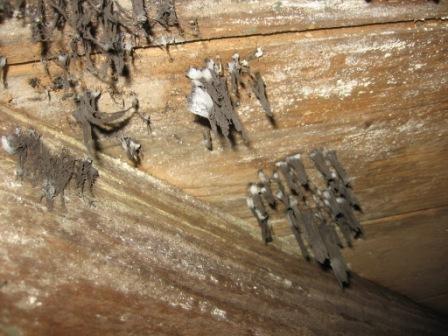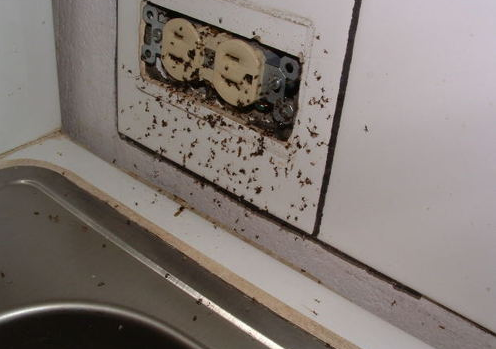
Water damage in the basement.
I used to wonder why my athletic teenage children suffered from sinusitis in the Fall, then a colleague was in our basement one day and asked, “Is it always this wet in your basement?” We lived at the bottom of two hills. “Only when it rains,” I said. He said that we could be experiencing problems related to mold and that I should take steps to dry out my basement.
I was like the cobbler whose children had no shoes. I had been in building research all of my adult life and grew up in a home building family. But, I didn’t start to notice how the health of the house affects the health of the occupants until after that conversation. We lived in a 1912 home in the Maryland suburbs. Old homes are great; they have wonderful character and atmosphere. They were also built before modern energy codes and therefore are generally very leaky and not well insulated.

Mold, oh my!
One year I had a chronic rhinosinusitis infection that lasted for three months. My Ear, Nose and Throat specialist was determined to wipe it out with medications. It took three courses of different antibiotics before the symptoms eventually disappeared. I began to think more carefully about conditions in our house and what might be contributing to these respiratory health conditions.
I made a list of things I had noticed over the years: rats chewed holes in crawl space doors to live (and die) in the relative warmth and security inside; sugar ants made a regular parade across kitchen countertops looking for food after rains; the yellow fiberglass insulation at the perimeter band joist in the basement was a disgusting brown from dirt, due to air infiltration from the adjacent crawl space; brown splotches of a suspicious moldy condition appeared on basement walls just 15 feet from the air handling unit; the furnace filter I changed every month was always caked in dirt; and, a pinhole leak in a copper pipe above the main bathroom produced black mold on surfaces above the shower.

This sure looks like an ant problem.
I started reading up on health issues in older homes. I realized that the U.S. is in the midst of an asthma epidemic. Of the nearly 22 million cases of asthma in the U.S., it is estimated that nearly 5 million of these cases are related to dampness and mold exposure in homes. Other asthma triggers include pet dander, dust mites in bed mattresses, and cockroach droppings.
I eventually installed an interior French drain system in my basement connected to a sump pump. This eliminated basement moisture. We had a BPI GoldStar Contractor with a crew of BPI Building Analysts air seal and insulate the walls and ceilings of the house. They sealed all HVAC ducts so that the comfort systems worked more efficiently. Lastly, all of the crawl spaces were sealed on the floor and walls and insulated properly. These upgrades dramatically improved the comfort and energy efficiency of the home – but more importantly, they also created a dramatic improvement on the quality of the air that we were breathing in our home.

Follow us